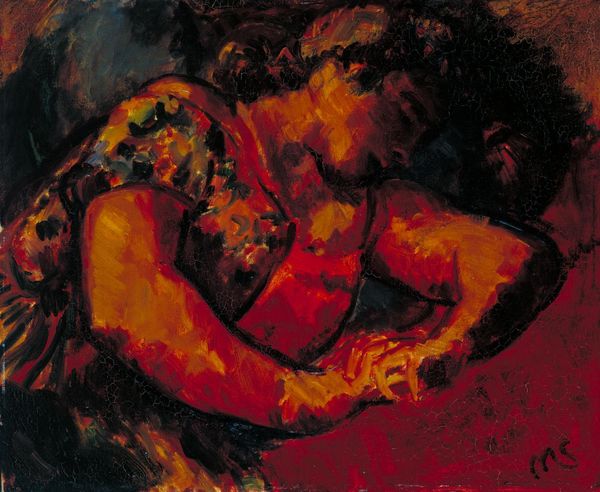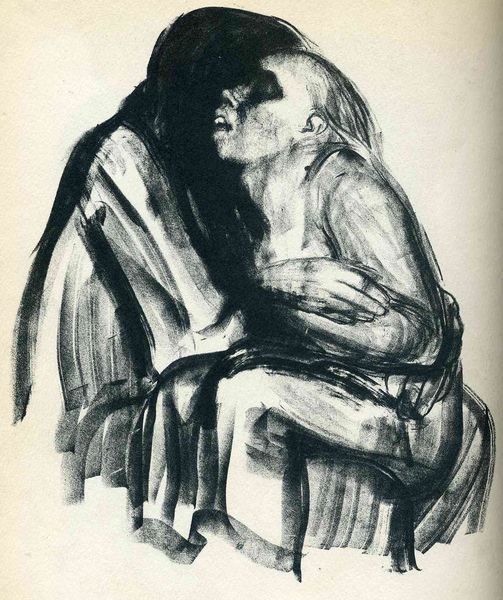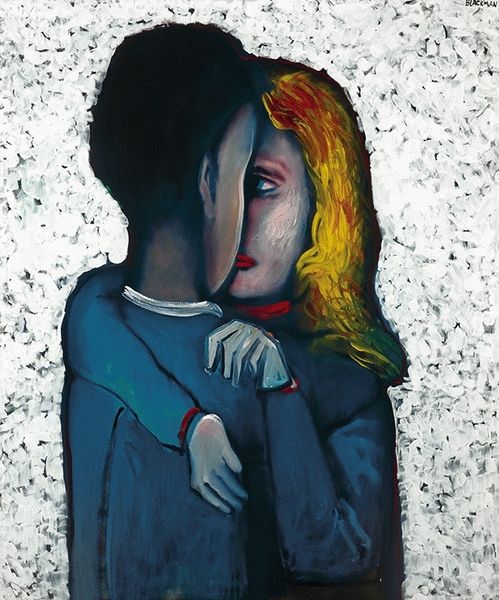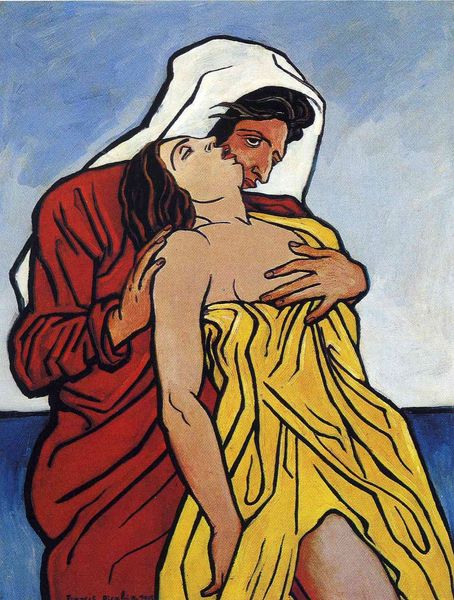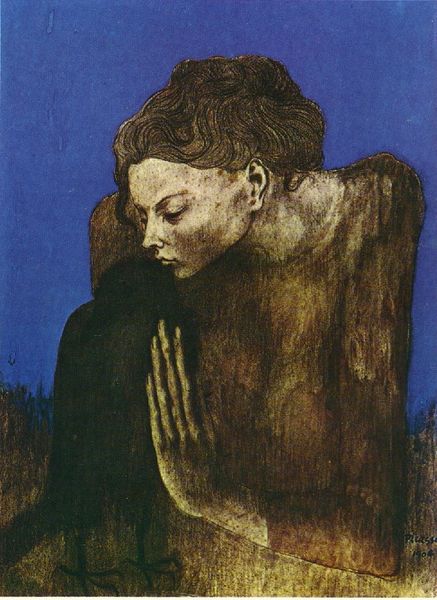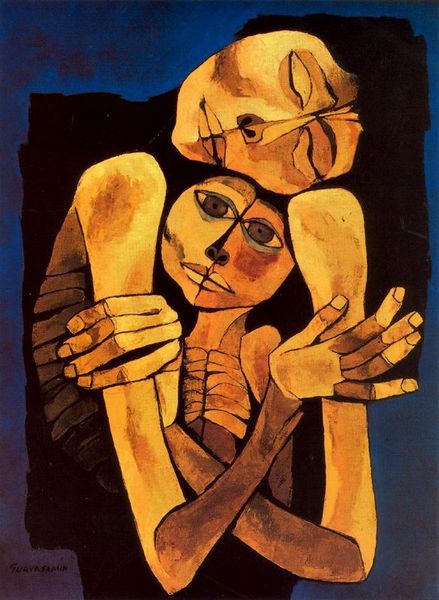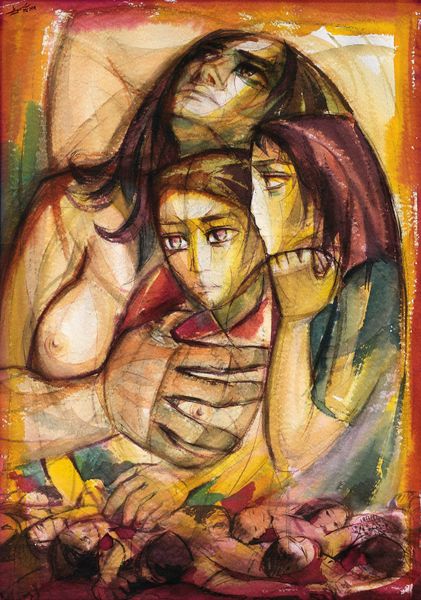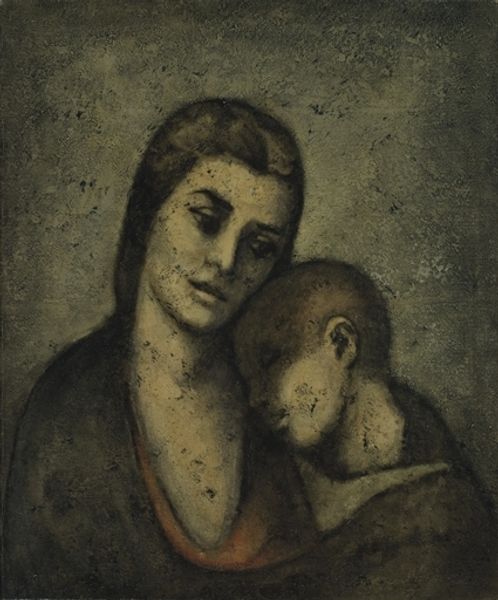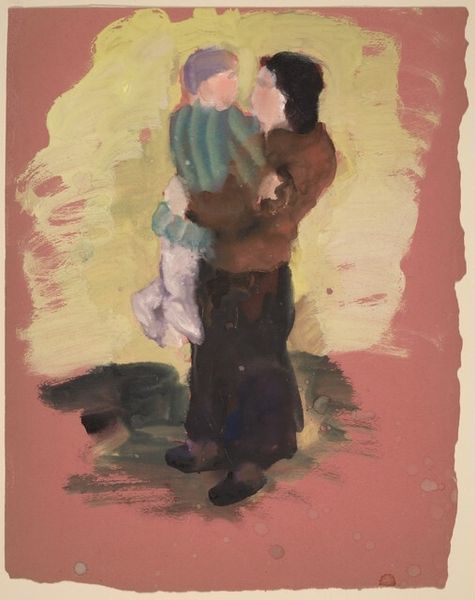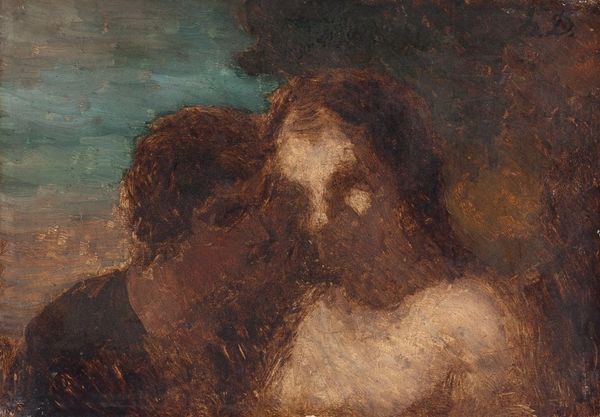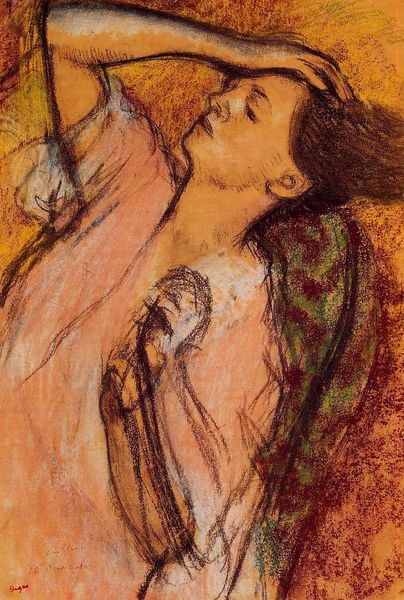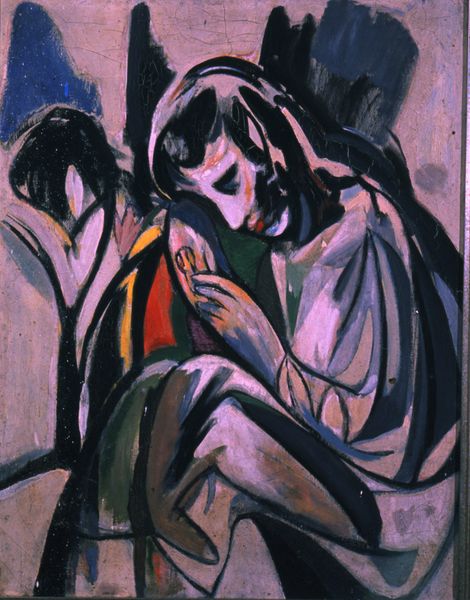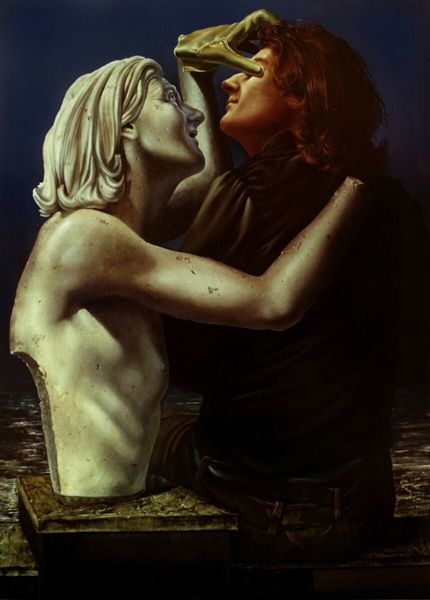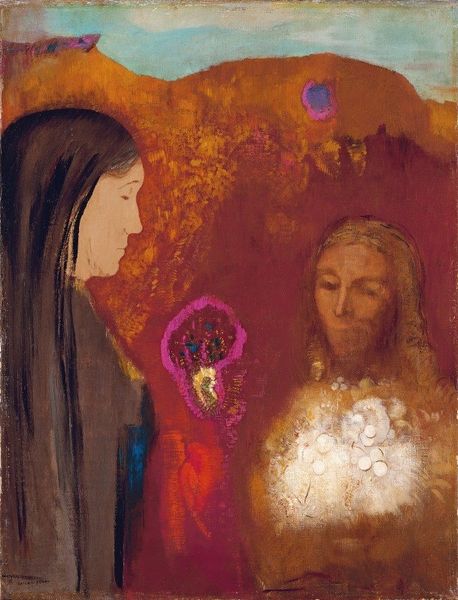
painting, oil-paint
#
portrait
#
narrative-art
#
painting
#
oil-paint
#
figuration
#
group-portraits
#
romanticism
Copyright: Charles Blackman,Fair Use
Curator: Here we have Charles Blackman's "The Kiss," an intimate figurative painting. What strikes you about it right away? Editor: Well, isn't that sweet, two souls smooshed together, sealed shut like a secret. There is a romantic desperation to it that I am a little suspicious of. Curator: Interesting take. What is making you say that? It seems this narrative aims to depict tenderness through a very visible application of oil paint in brushstrokes, where forms simplify into basic shapes and convey emotional states through colour, like those vibrant reds and muted yellows. Editor: Exactly. See those heavy contours around their faces? Almost violent. It’s love, yes, but the painting itself feels labored, even... forced. I'm wondering about the artist, about his own experience of relationships that he is working through here. Curator: Let’s remember that Blackman, particularly during this period, frequently dealt with themes of love and relationships, influenced by his personal life. The visible brushstrokes that build depth can reflect the complexities and intense emotional investments characteristic of human connections and relationships in modern urbanized living conditions, that are made possible by those relations in the first place. Editor: You make an intriguing point about Blackman translating contemporary feelings into an aesthetic response in "The Kiss", an appeal to raw human experiences. Still, this isn’t a light, airy Monet. It’s earthier, grittier, almost...suffocating. And is that supposed to signal love, that need to just gobble each other up. Is that honest love or something more performative, more expected? Curator: Performance is a useful insight for considering how love is enacted in the late modern period. How do the labour of painting as seen here—in the textured application and deliberate structuring—intersect with how these displays, or this depiction of intimacy, becomes almost industrialized, to be produced, consumed, and processed in painting. Editor: Okay, so love, art, relationships—they're all a job? That sounds about right to me. Perhaps that dark observation has left a mark here, in the art work we can see before us. Curator: A final mark worth acknowledging in considering the production and reproduction of social relations in this canvas.
Comments
No comments
Be the first to comment and join the conversation on the ultimate creative platform.
